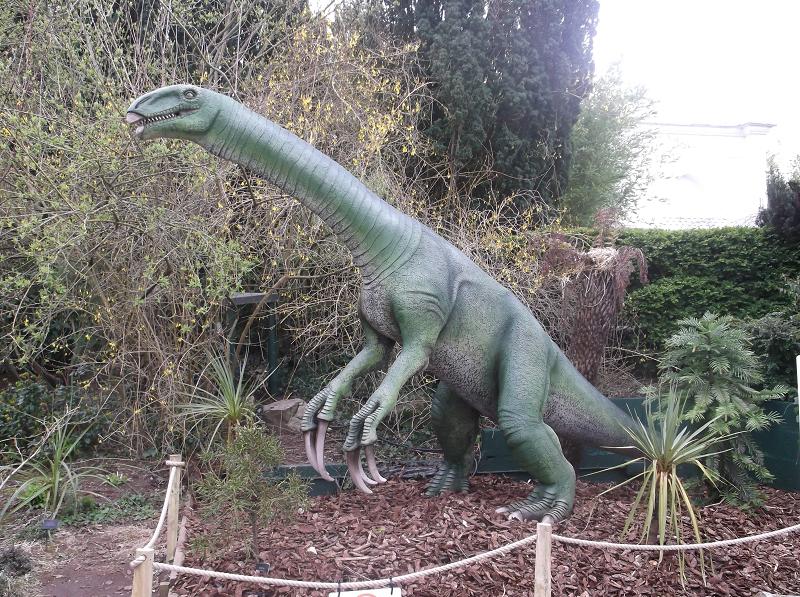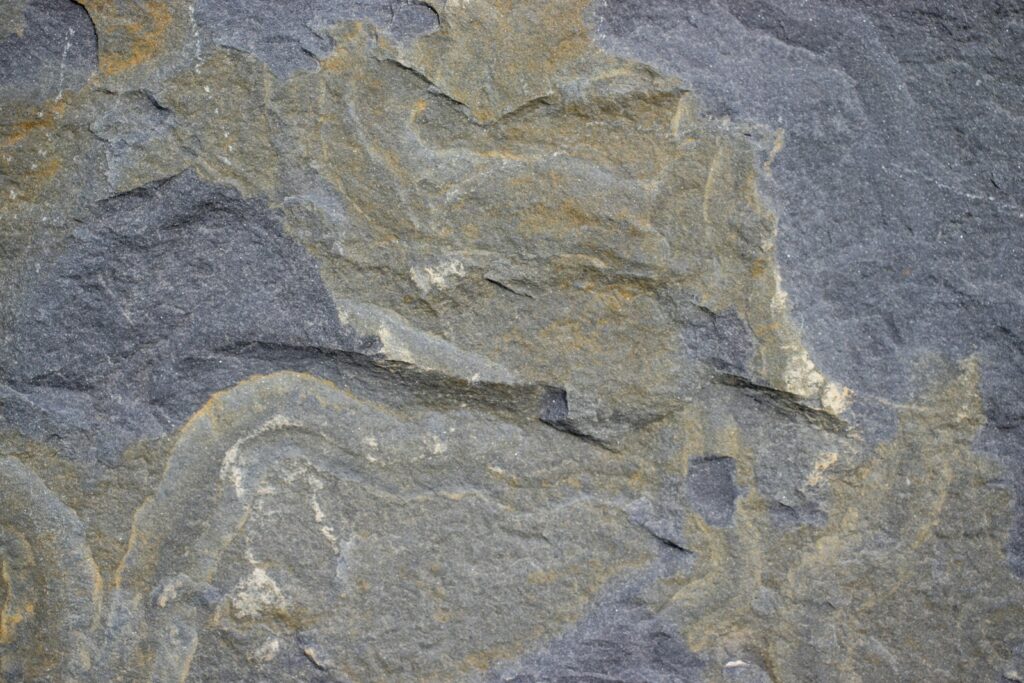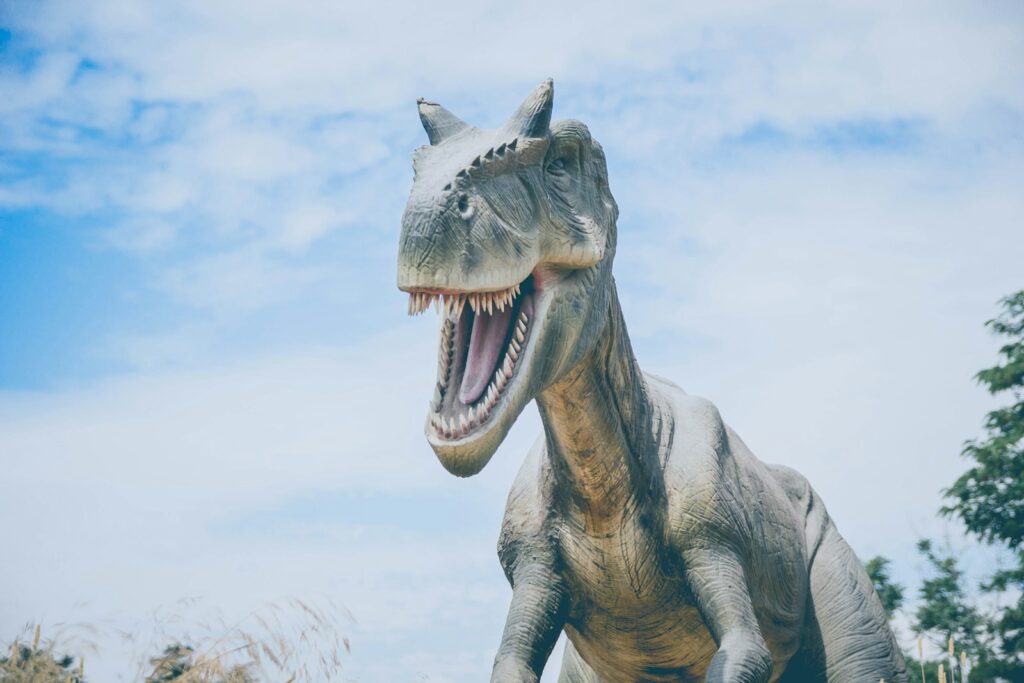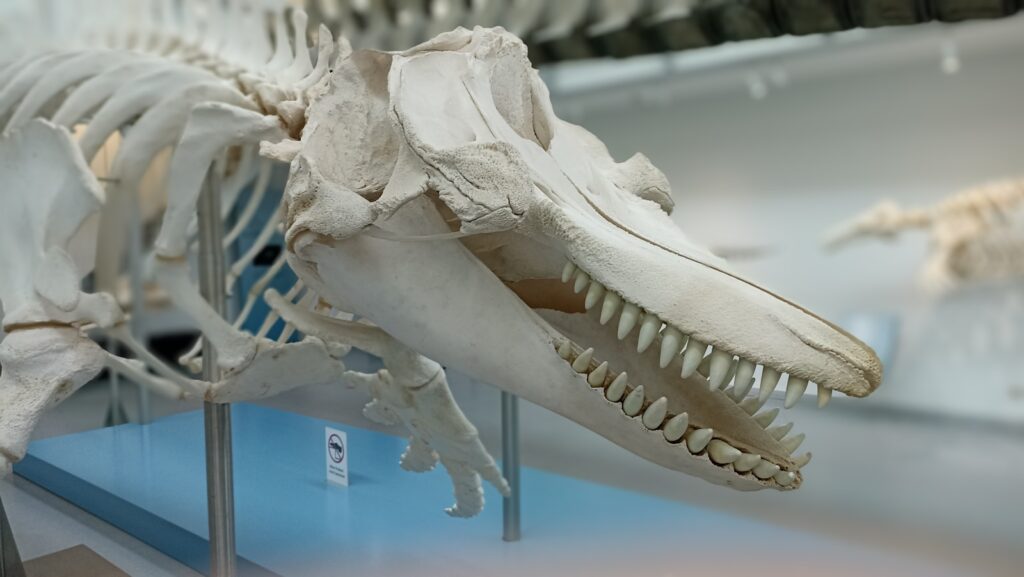In the shadows of paleontological fame lurk prehistoric predators just as fearsome as the Tyrannosaurus rex or Velociraptor, yet far less celebrated in popular culture. While museum halls worldwide showcase the familiar giants of the Mesozoic Era, certain formidable dinosaurs remain relatively unknown to the general public despite their terrifying capabilities. Today, we venture into the lesser-explored corners of prehistoric life to uncover a particularly nightmarish creature – Therizinosaurus. With its bizarre appearance and lethal adaptations, this dinosaur defies conventional expectations and represents one of evolution’s most unusual experiments in predatory design.
The Enigmatic Therizinosaurus: Nature’s Prehistoric Nightmare

Meet Therizinosaurus cheloniformis, a dinosaur whose name translates to “scythe lizard” – an apt description for a creature bearing the longest claws of any known animal in Earth’s history. First discovered in Mongolia’s Gobi Desert in the 1940s, paleontologists initially found only the extraordinary claws of, which measured up to three feet in length. These massive, curved talons resembled enormous scythes, leading researchers to believe they had discovered a turtle-like creature. It wasn’t until further fossil discoveries that scientists realized they were dealing with one of the most unusual theropod dinosaurs ever to walk the planet. The Therizinosaurus lived during the Late Cretaceous period, approximately 70 million years ago, roaming what is now Mongolia and China.
The Biological Swiss Army Knife: Therizinosaurus’s Deadly Arsenal

Therizinosaurus possessed what might be considered the most intimidating natural weapons of any dinosaur – massive forearms ending in three extraordinarily elongated claws on each hand. These formidable talons could reach lengths of up to three feet (one meter), sharp enough to impale prey and strong enough to tear through thick hide and vegetation. Unlike the hunting claws of velociraptors or the crushing jaws of tyrannosaurs, these massive scythe-like appendages gave Therizinosaurus unprecedented versatility. The claws could potentially rip open the bellies of predators, pull down branches laden with foliage, or disembowel threats with devastating efficiency. Some paleontologists believe these claws could exert enough force to puncture the armor of contemporary dinosaurs, making Therizinosaurus a genuine threat to even well-protected prey.
The Paradox of Size and Stature

Standing at a towering height of up to 16 feet (5 meters) tall and measuring approximately 33 feet (10 meters) in length, Therizinosaurus commanded a substantial physical presence. Its enormous size placed it among the largest known theropods, with weight estimates ranging from 3 to 5 tons. Despite its considerable mass, the Therizinosaurus exhibited a peculiar body plan that differentiated it from other large predatory dinosaurs. Its long neck supported a relatively small head, while its body carried a large, pot-bellied abdomen that housed an extensive digestive system. This unusual proportioning created a dinosaur that could easily look down upon most human-built single-story structures, while its massive frame would have rivaled modern elephants in weight and volume. The combination of this massive body with its specialized weaponry created a creature unlike anything alive today.
A Predator That Preferred Plants: The Dietary Surprise

Perhaps the most perplexing aspect of Therizinosaurus lies in the disconnect between its fearsome appearance and its actual dietary preferences. Despite possessing weapons that would make any carnivore envious, multiple lines of evidence suggest that this terrifying-looking dinosaur was primarily herbivorous. This represents one of paleontology’s most surprising conclusions about a seemingly predatory creature. Its small head contained relatively weak jaws with leaf-shaped teeth more suitable for stripping vegetation than tearing flesh. Scientists theorize that the massive claws likely evolved for pulling down high branches, digging for roots, or defending against predators rather than for hunting. This unusual combination of predatory features with herbivorous behavior makes Therizinosaurus one of prehistory’s most misleading creatures – essentially a vegetarian dressed as a nightmarish monster.
The Evolutionary Oddity: From Hunter to Gatherer

Therizinosaurus belongs to a family called therizinosaurs, which represent one of evolution’s most dramatic dietary shifts. Originating from carnivorous theropod ancestors (the same lineage that produced Tyrannosaurus and Velociraptor), therizinosaurs underwent a remarkable evolutionary transition toward herbivory. This dramatic shift in diet required substantial anatomical modifications, including changes to the digestive system, teeth, and overall body structure. Their wide hips accommodated the larger digestive tracts necessary for processing plant material, while their necks elongated to reach higher vegetation. The most puzzling aspect remains why they maintained and even enhanced their massive claws during this dietary transition. Some paleontologists suggest these adaptations might have helped them defend against the numerous predators of the period, creating a bizarre example of a creature that evolved to become less predatory while simultaneously developing more fearsome weapons.
Unanswered Mysteries: The Gaps in Our Knowledge

Despite decades of research, Therizinosaurus remains shrouded in scientific uncertainty. Complete fossil specimens have proven elusive, with most reconstructions based on fragmentary remains and related species. This lack of complete skeletal material has led to significant debates regarding its exact appearance, posture, and behavior. The purpose of its enormous claws continues to inspire scientific disagreement, with theories ranging from defensive weapons to specialized feeding tools. Even basic aspects of its biology remain contested, including its running speed, metabolic rate, and social behavior. This scientific ambiguity contributes to Therizinosaurus’s mysterious nature, leaving much about this prehistoric giant to the imagination. With each new fossil discovery, paleontologists refine their understanding of this paradoxical creature, often requiring substantial revision of previous theories.
Living Among Giants: The Ecosystem of Therizinosaurus

The Late Cretaceous environment where Therizinosaurus thrived was a complex ecosystem teeming with both formidable predators and potential competitors. This bizarre dinosaur shared its habitat with the infamous Tarbosaurus (an Asian relative of Tyrannosaurus rex), packs of Velociraptor, and the heavily-armored Tarchia. The Nemegt Formation, where many Therizinosaurus fossils have been discovered, represents an ancient floodplain environment with rivers, lakes, and abundant vegetation. Unlike many dinosaur habitats that experienced seasonal droughts, this ecosystem likely provided year-round resources, allowing for the evolution of specialized creatures like Therizinosaurus. This rich environment supported numerous large herbivores, suggesting that Therizinosaurus may have faced significant competition for plant resources while simultaneously needing to defend against some of the most effective predators in evolutionary history.
The Armor Problem: Defenseless Despite Its Weapons

Despite its intimidating appearance, Therizinosaurus faced a significant defensive vulnerability – its apparent lack of substantial body armor. Unlike many large herbivorous dinosaurs that evolved thick plates, spikes, or bony shields, Therizinosaurus appears to have relied almost entirely on its massive claws for protection. This unusual defensive strategy placed enormous importance on its ability to use its forelimbs effectively against predators. Paleontologists speculate that when threatened, Therizinosaurus may have reared up to its full height, using its massive claws in sweeping motions to keep predators at bay. This high-risk defensive strategy would have required considerable coordination and strength, suggesting these dinosaurs possessed significant neurological adaptations to effectively wield their biological weapons. The absence of traditional armor makes Therizinosaurus’ survival in a predator-rich environment even more remarkable.
The Cultural Obscurity: Why It Remains Unknown

Despite its extraordinary features, Therizinosaurus has remained relatively obscure in popular culture compared to dinosaurs like Tyrannosaurus, Triceratops, or Velociraptor. This cultural invisibility stems from several factors, including its relatively recent scientific description and the fragmentary nature of its fossil record. Additionally, its complex and contradictory nature – a terrifying-looking herbivore – makes it less marketable than straightforward predators or distinctive horned dinosaurs. Major film franchises like Jurassic Park overlooked Therizinosaurus until recently despite its cinematic potential. When museums create dinosaur exhibitions, they often prioritize more complete specimens with clearer narratives rather than enigmatic creatures like Therizinosaurus. This combination of scientific uncertainty and marketing challenges has kept one of prehistory’s most remarkable creatures largely hidden from public awareness.
Recent Discoveries: Changing Our Understanding

The scientific understanding of Therizinosaurus continues to evolve with recent fossil discoveries providing new insights into this peculiar dinosaur. Discoveries of related therizinosaurs with preserved feather impressions suggest that therizinosaurus likely possessed primitive feathering, perhaps resembling shaggy fur rather than the sleek feathers of modern birds. This revelation transforms our visualization from a scaly monster to something more akin to an enormous, clawed, bird-like creature. Recent studies of brain cases from related species indicate that herizinosaurs had enlarged areas associated with coordination and spatial awareness, supporting theories about their sophisticated use of their massive forelimbs. Isotope analyses of tooth samples from related species have strengthened the case for herbivory, indicating a diet rich in particular types of vegetation. Each discovery peels back another layer of mystery surrounding this prehistoric oddity.
The Feathered Monster: Appearance, Reality vs. Popular Perception

If a living Therizinosaurus were to appear today, modern observers would likely be shocked by its appearance, which would differ dramatically from traditional dinosaur depictions. Current scientific evidence suggests it would have resembled an enormous, pot-bellied bird with massive arms rather than a typical reptilian dinosaur. Its body was likely covered in primitive feathers or feather-like structures, particularly along its back and tail, giving it a shaggy appearance. Rather than the bright scales often depicted in older reconstructions, its skin was probably covered in duller feathering adapted for insulation rather than display. The combination of its massive size, pot belly, small head on a long neck, and enormous claws would create a creature unlike anything in our modern experience. This disconnect between scientific reconstructions and popular imagination contributes to the continued mystery surrounding this remarkable animal.
Legacy in Evolution: What Therizinosaurus Teaches Us

Therizinosaurus represents one of evolution’s most fascinating experiments, demonstrating how dramatically a lineage can transform over time. Its evolutionary journey from a carnivorous ancestor to a specialized herbivore challenges simplistic notions about evolutionary directionality and adaptation. The enormous claws of Therizinosaurus exemplify how structures can evolve for one purpose (predation) and later be repurposed for entirely different functions (vegetation gathering and defense). This concept, called exaptation, represents a fundamental evolutionary principle that Therizinosaurus illustrates perfectly. Additionally, the therizinosaur family demonstrates how rapidly evolution can produce specialized forms when ecological opportunities arise. The study of these unusual dinosaurs continues to provide valuable insights into evolutionary processes, ecological relationships, and the incredible diversity of life that has inhabited our planet. Through creatures like Therizinosaurus, we gain an appreciation for evolution’s creative potential.
Conclusion

In conclusion, Therizinosaurus stands as one of prehistory’s most remarkable enigmas – a creature whose fearsome appearance belied its gentle diet, whose massive weapons may have served primarily for gathering food rather than hunting prey. This contradiction makes it perhaps more fascinating than better-known dinosaurs with more straightforward lifestyles. As paleontological methods continue to advance, we can expect our understanding of this bizarre creature to evolve, potentially revealing even more surprising aspects of its biology and behavior. Until then, Therizinosaurus reminds us that prehistoric life was often stranger and more complex than we might imagine, with evolutionary pathways producing creatures that defy easy categorization or modern parallels.




